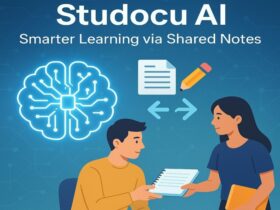OpenAI has rolled out GPT-5 across ChatGPT and its other tools, billing it as the company’s most capable public-facing model to date. For classrooms, the immediate takeaway is less about a dramatic leap and more about steadier performance: GPT-5 is designed to hallucinate less, handle complex reasoning more deliberately, and provide stronger support for coding. That combination matters because ChatGPT remains the most widely used AI assistant among students and educators, and even incremental improvements can ripple through lesson planning, homework help, and assessment design.
The launch arrives after a series of models that have shaped AI’s role in education—GPT-3.5 with ChatGPT’s 2022 debut, GPT-4 in 2023, and variants like GPT-4o and GPT-4.5 that followed. In advance of this release, OpenAI framed GPT-5 as a long-awaited step-change. CEO Sam Altman called it “a significant step along the path of AGI” and likened its breadth to having a PhD-level expert on demand. That framing raised expectations, but early user reaction has been mixed. Some reviewers argued the model “landed with a thud,” pointing to output that feels familiar rather than transformative. Others, including side-by-side testers, reported clear wins over rival systems and noticeable gains on complex prompts compared with GPT-4. Both can be true: in casual use, the model feels like a refinement; in structured tasks, especially those requiring multi-step reasoning or code synthesis, it often performs more confidently.
Part of the confusion stems from where improvements show up. GPT-5’s most visible changes are subtle. It is trained to avoid flattery and over-agreement, so responses may feel calmer and less “chatty.” It also routes tougher questions to a deeper reasoning mode, so a math proof, a multi-constraint schedule, or a code refactor may take a heartbeat longer but yield a more defensible answer. Educators may not notice this in simple brainstorming, yet they’ll see steadier logic chains in tasks that demand stepwise thinking. Under the hood, the model also tightens failure cases: fewer invented citations, fewer confident-but-wrong definitions, fewer brittle moments when a prompt veers slightly off the training rails. None of this is glamorous, but it is the kind of reliability teachers repeatedly ask for.
Reactions have also been colored by changes to model menus and “personality.” Some users miss the lighter tone of previous variants or the ability to select older models from the picker. That’s relevant in classrooms where teachers tuned prompts for a specific model voice or cadence. In practice, most educators will adapt quickly: the core behaviors—summarizing texts, drafting exemplars, generating practice questions, and differentiating materials by reading level—are intact, and the model’s default restraint can actually be helpful when you want clear, citation-ready prose rather than flourishes.
What does this look like in a class setting? On routine planning tasks—unit maps, lesson outlines, anticipatory sets—GPT-5 behaves like a steadier assistant. It proposes more coherent sequences, is less likely to slip in tenuous facts, and will usually justify steps if asked to “show your reasoning.” On student-facing exercises, it’s better at constructing scaffolded problem sets with progressive difficulty. In computer science courses, the most tangible jump is in code help: GPT-5 is better at reading error traces, explaining why a function fails on edge cases, and suggesting minimal diffs that keep a student’s code style intact. It’s not infallible; teachers should still require students to run tests and explain why a suggested change works. But the hit rate is up, and the model is less prone to “confidently wrong” fixes that used to burn class time.
Educators will also notice the limits. Ask GPT-5 to produce a short response paper or a reflective paragraph, and you’ll likely get clean, grammatically polished prose that still reads generic—an improvement in structure, not in authentic voice. Phrases that sound insightful but carry little specific meaning remain a tell. That matters for English and humanities assignments where originality of thought and textual evidence are the point. The safest response remains assessment design: prioritize process over product. Require students to submit brainstorming notes, working theses, outlines, and a brief metacognitive reflection explaining how they used any AI assistance. Use in-class “cold writes” or oral check-ins to connect the polished submission to the student’s own reasoning. None of this is new, but GPT-5’s fluency makes it even more important.
For academic integrity, GPT-5 raises the floor on quality but doesn’t make detection any more reliable. Classifiers and “AI detectors” still produce false positives and are easy to evade with light editing. Instead of chasing detection, define clear usage rules. Spell out what’s permitted (idea generation, structure suggestions, grammar passes) and what isn’t (drafting full essays, fabricating sources, completing graded work without attribution). Ask students to include an AI usage statement showing the exact prompts and pasted outputs they relied on. This nudges them toward transparent, ethical use while giving teachers visibility into the process.
Accessibility and differentiation continue to be bright spots. GPT-5 can generate leveled readings, bilingual glossaries, step-by-step math explanations, or alternative examples tailored to varied backgrounds. With hallucinations reduced, these supports are a little safer to adopt—but they still require teacher review. When asking for reading-level adjustments or summaries, include your source text in the prompt, request citations, and spot-check key claims against the original.
So what should teachers do this week? Start by updating your syllabus language on AI use, so expectations are unambiguous with the new model in place. Refresh a few go-to prompts for planning and materials: one concise prompt for quick tasks and one “think step by step” prompt for deeper reasoning. In courses using code, add a standing requirement that students run unit tests and annotate AI-assisted changes with a one-sentence rationale per edit. In writing-heavy classes, shift more weight to proposal, outline, and revision checkpoints; use short in-class writing samples to establish a baseline voice for each student, which helps you coach growth and notice mismatches without resorting to unreliable detectors.
Looking ahead, the most consequential changes may arrive not from the base model itself but from integrations that wrap around it. Expect learning platforms and LMS tools to expose GPT-5-powered features for item generation, rubric alignment, and formative feedback. Districts will continue to refine policies on data privacy, allowable use, and age-appropriate access. Teachers can prepare by documenting how they already use AI for planning and support, noting what saves time, what improves equity, and where human oversight is essential. Those notes become evidence when schools evaluate tools or set guardrails.
The bottom line for education is balanced. GPT-5 won’t upend your classroom overnight, but it does nudge AI from “impressive but flaky” toward “dependable enough to plan around,” especially for reasoning and code. Treat it like a better calculator: useful, fast, and increasingly reliable—yet still in need of human aims, subject expertise, and assessment designs that reward original thinking. For most teachers, that’s both reassuring and a reminder to keep honing the practices that matter regardless of model version: clarity about allowed use, transparency from students, and assignments that make learning visible.












































Leave a Reply